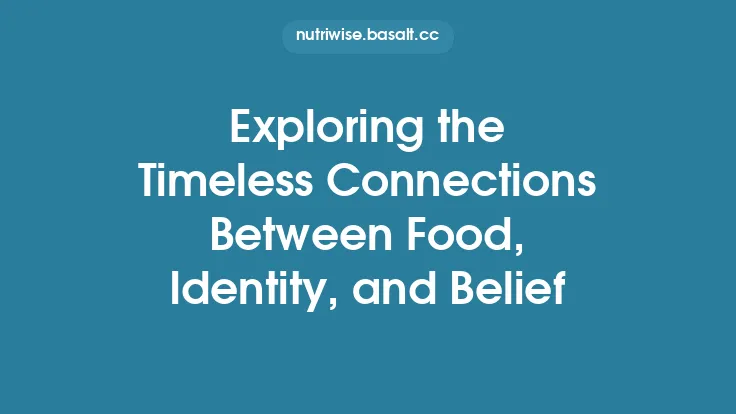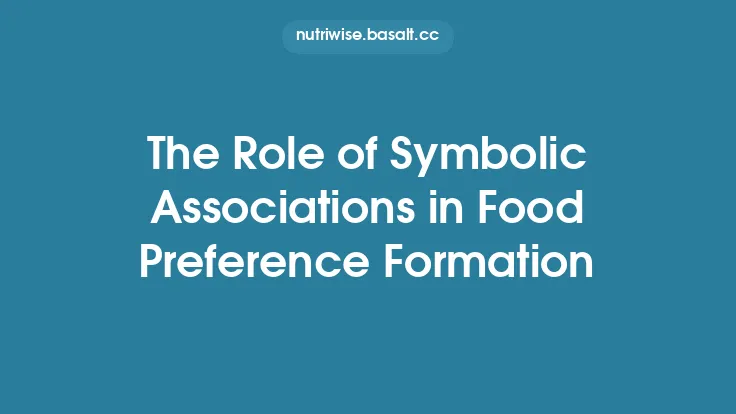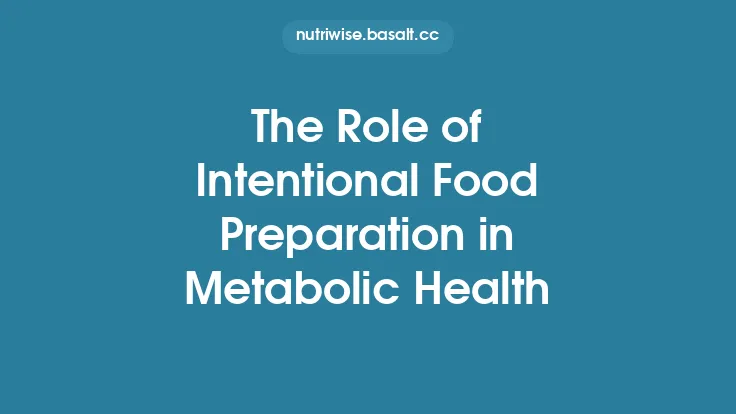Food has always spoken louder than words. Long before the invention of written language, societies encoded values, hopes, fears, and cosmologies into the very ingredients they cultivated, prepared, and shared. The symbols embedded in a grain of rice, a slice of bread, or a bowl of soup travel across borders and epochs, forming a universal lexicon that transcends linguistic and geographic divides. This article explores the timeless meanings that food carries across cultures, tracing the archetypal motifs, semiotic structures, and ritual functions that make culinary symbolism a truly global language.
Archetypal Themes in Food Symbolism
Anthropologists and mythologists repeatedly encounter a set of recurring archetypes that shape how peoples worldwide interpret food. Carl Jung’s concept of the collective unconscious provides a useful lens: certain images—seed, fire, water, and the hearth—appear in myths and culinary practices across disparate societies, suggesting deep‑rooted psychological patterns.
| Archetype | Core Meaning | Representative Foods | Cross‑Cultural Examples |
|---|---|---|---|
| Seed / Grain | Potential, renewal, sustenance | Wheat, rice, millet, corn | In ancient Mesopotamia, barley represented the promise of a new harvest; among the Maya, maize was the “seed of life” that linked humanity to the gods; in Japan, rice is celebrated as the “heart of the nation,” embodying continuity. |
| Fire / Roast | Transformation, purification, vitality | Roasted meat, toasted nuts, charred vegetables | The Greek symposium’s roasted lamb symbolized communal vigor; the Inuit’s fire‑cooked seal meat marked the transition from hunting to sharing; in West Africa, roasted plantains are offered to honor ancestors, signifying the passage from raw to refined. |
| Water / Soup | Healing, unity, the flow of life | Broths, stews, fermented drinks | Korean “guk” (soup) is served at every major life event, embodying the fluidity of fate; Russian “borscht” unites diverse regional ingredients into a single, nourishing whole; in the Philippines, “sinigang” (sour soup) is believed to cleanse the body and spirit. |
| Hearth / Bread | Home, stability, communal bond | Bread, flatbreads, tortillas | The ancient Egyptian “ta” (flatbread) was placed on household altars as a symbol of domestic order; Mexican corn tortillas are the daily “canvas” upon which families build meals, reinforcing the hearth’s centrality; Ethiopian “injera” serves as both plate and communal table, embodying the shared space of the hearth. |
These archetypes function as a semiotic scaffolding, allowing disparate cultures to convey analogous concepts through locally available foods. The universality of the seed, fire, water, and hearth motifs underscores a shared human experience: the need to make sense of growth, change, nourishment, and community.
Cross‑Cultural Motifs of Abundance and Prosperity
While the specific foods differ, the symbolic representation of wealth and plenty follows a recognizable pattern. Abundance is often signaled through:
- Quantity and Presentation – Large platters, overflowing bowls, or multiple courses signal generosity. In Chinese New Year celebrations, the “longevity noodles” are served in an uncut, elongated form to symbolize endless prosperity. Similarly, Persian “sofreh” spreads feature an abundance of nuts, fruits, and sweets, each item representing a facet of wealth.
- Golden or Rich Hues – Though the article on color symbolism is excluded, the association of certain foods with richness (e.g., saffron‑stained rice, honey‑glazed pastries) persists across cultures, reflecting a visual cue for opulence without delving into chromatic theory.
- Rare or Seasonal Ingredients – The inclusion of items that are difficult to obtain—truffles in Europe, yams in West Africa, or pomegranate seeds in the Middle East—conveys status and the promise of future bounty. In many agrarian societies, the first harvest of a prized crop is offered in communal feasts, symbolically “locking in” prosperity for the coming year.
These motifs operate as a visual and gustatory language of wealth, allowing hosts to communicate their capacity to provide and their desire for reciprocal goodwill.
Food as a Metaphor for Life Cycles
The cyclical nature of existence—birth, growth, death, and rebirth—is mirrored in culinary symbolism worldwide.
- Birth and Initiation – Soft, milky foods such as rice porridge (congee) in East Asia or “pap” in West Africa are traditionally given to newborns, symbolizing the nurturing start of life. The smooth texture and gentle flavor echo the fragility of infancy.
- Growth and Maturation – Fermented products, which transform through microbial activity, embody the passage from raw potential to refined maturity. Korean kimchi, German sauerkraut, and Ethiopian injera each undergo a controlled decay that yields a richer, more complex flavor, mirroring personal development.
- Death and Transition – Certain foods are deliberately prepared to signify the end of a phase. In many cultures, bitter herbs are served at funerals or memorial meals, representing the bitterness of loss while also preparing the palate for the “sweetness” of remembrance. The act of sharing these foods creates a communal space for mourning and acceptance.
- Rebirth and Renewal – Spring festivals frequently feature sprouted grains or fresh greens, symbolizing regeneration. The Jewish “Passover” Seder plate includes a bitter herb and a sweet charoset, juxtaposing the memory of slavery with the hope of liberation—a culinary reenactment of cyclical redemption.
Through these metaphoric layers, food becomes a narrative device, allowing societies to externalize internal processes and collectively experience the rhythms of life.
Rituals of Hospitality and Social Bonds
Hospitality is a cornerstone of human interaction, and food serves as its most potent emblem. Across continents, the act of offering specific dishes carries a set of expectations and meanings:
- Invitation and Acceptance – In many Arab cultures, the offering of dates and water to a guest is a prelude to a larger meal, signaling openness and respect. The simplicity of the gesture underscores the host’s willingness to share even the most basic sustenance.
- Reciprocity and Alliance – The “potluck” tradition, found in various forms from the American community gathering to the Japanese “ochugen” gift exchange, embodies a mutual exchange where each participant contributes a dish, reinforcing social cohesion through shared responsibility.
- Status and Negotiation – The selection of certain foods can subtly convey hierarchy. In traditional Korean “jeongol” (hot pot) gatherings, the host places the most prized ingredients—such as premium beef slices—at the center, indicating the honored status of the primary guest.
These hospitality rituals encode a language of respect, alliance, and social order, allowing participants to navigate complex interpersonal dynamics without explicit verbal negotiation.
Transformation and Transcendence in Culinary Symbolism
Beyond the literal act of cooking, many cultures embed the notion of transcendence within food preparation, using it as a metaphor for spiritual or intellectual elevation.
- Alchemical Metaphors – The medieval European practice of turning base ingredients into “golden” pastries (e.g., honey‑glazed tarts) was often described in alchemical terms, suggesting a movement from the mundane to the sublime. Similarly, the Indian practice of “tadka” (tempering spices in hot oil) is likened to the ignition of inner fire, a symbolic awakening of consciousness.
- Ritual Purification – In many indigenous societies, the act of washing rice or rinsing beans before cooking is not merely hygienic but also a symbolic cleansing, preparing the food—and by extension, the eater—for a higher state of being.
- Elevated Consumption – The ceremonial serving of “ambrosia” in ancient Greek myth, though mythic, reflects a broader pattern where certain foods are believed to confer temporary transcendence, whether through intoxication, heightened sensory experience, or communal ecstasy.
These transformative narratives illustrate how food can serve as a conduit for moving beyond ordinary perception, reinforcing the idea that culinary acts are imbued with metaphysical significance.
The Role of Myth and Folklore in Shaping Food Symbols
Myths act as cultural repositories, preserving and transmitting symbolic meanings across generations. Food frequently occupies central roles within these narratives:
- Creation Myths – In many African oral traditions, the first humans are said to have emerged from a giant “yam” or “cassava” root, positioning the staple as the literal source of humanity. This mythic origin bestows a sacred yet non‑religious reverence upon the crop, reinforcing its centrality in daily life.
- Heroic Quests – The Norse saga of Thor’s journey to retrieve the “golden apples” of Idunn illustrates how fruit can symbolize vitality and the preservation of divine strength. In East Asian folklore, the “peach of immortality” appears in Chinese mythology as a token of eternal life, linking the fruit to longevity.
- Moral Lessons – Aesop’s fable “The Ant and the Grasshopper” uses the ant’s diligent storage of grain as a cautionary tale about foresight and prudence, embedding a cultural value within the act of grain preservation.
These stories embed food within a moral and cosmological framework, ensuring that symbolic meanings are reinforced each time the narrative is retold or the associated dish is prepared.
Semiotic Frameworks for Interpreting Food Symbols
To systematically decode the language of food, scholars employ semiotic models that treat culinary elements as signs composed of a signifier (the physical food) and a signified (the concept it represents). Two primary approaches dominate:
- Structuralist Semiotics – This perspective, championed by Claude Lévi‑Strauss, examines binary oppositions (raw vs. cooked, sweet vs. bitter, abundant vs. scarce) that structure culinary meaning. For instance, the contrast between “sweet” desserts and “bitter” herbs in a single meal can be read as a symbolic negotiation between pleasure and caution.
- Peircean Triadic Model – Charles Peirce’s classification of signs into iconic, indexical, and symbolic offers a nuanced lens. A ripe fruit may be iconic (resembling health), a seasonal harvest indexical (pointing to a specific time of year), and a ceremonial cake symbolic (conveying abstract concepts like celebration). Applying this triad helps differentiate between immediate sensory associations and culturally constructed meanings.
By employing these frameworks, researchers can map the layers of meaning embedded in a single dish, revealing how personal experience, cultural context, and historical precedent intersect to produce a rich semiotic tapestry.
Continuities and Adaptations Through Time
While the core archetypes remain remarkably stable, the specific foods that embody them evolve with trade, migration, and technological change.
- Trade Routes as Vectors of Symbolic Exchange – The Silk Road introduced spices such as cinnamon and pepper to the Mediterranean, where they quickly acquired new symbolic weight as markers of exotic wealth. Similarly, the Columbian exchange brought maize to Africa, where it was assimilated into existing fertility symbols, merging New World grain with African rites of harvest.
- Technological Shifts – The advent of refrigeration altered the symbolism of preservation. In pre‑industrial societies, salted fish or smoked meat signified endurance and foresight; today, the same items may be viewed as nostalgic or artisanal, reflecting a shift from necessity to heritage.
- Diasporic Reinterpretations – Immigrant communities often reconfigure traditional symbols to fit new environments. The Indian diaspora in the Caribbean, for example, transformed the traditional “sugarcane” harvest festival into a celebration centered around “sweet potato” dishes, preserving the underlying motif of abundance while adapting to local agriculture.
These dynamics illustrate that while the language of food symbolism is universal, its vocabulary is fluid, constantly reshaped by external forces yet anchored in enduring human concerns.
Implications for Cross‑Cultural Understanding
Recognizing food as a universal symbolic system offers practical benefits for intercultural communication:
- Diplomacy and Negotiation – Offering a dish that aligns with the host’s symbolic expectations (e.g., a “prosperity” rice dish in East Asian contexts) can foster goodwill and signal respect for cultural values.
- Education and Cultural Preservation – Teaching students about the archetypal meanings behind everyday foods encourages deeper appreciation of heritage and promotes the safeguarding of intangible cultural assets.
- Conflict Resolution – Misinterpretations of culinary gestures often underlie social friction. By decoding the symbolic intent—such as distinguishing a “welcome” offering from a “challenge”—mediators can address underlying tensions more effectively.
In essence, the universal language of food symbolism provides a bridge that connects disparate societies, allowing them to converse through taste, texture, and tradition rather than solely through spoken words.
Through centuries of myth, ritual, and daily practice, food has woven a complex, yet remarkably coherent, symbolic tapestry that spans continents and epochs. By attuning ourselves to the archetypal motifs, semiotic structures, and cultural narratives embedded in what we eat, we gain access to a timeless mode of communication—one that speaks directly to the human heart, mind, and spirit.





